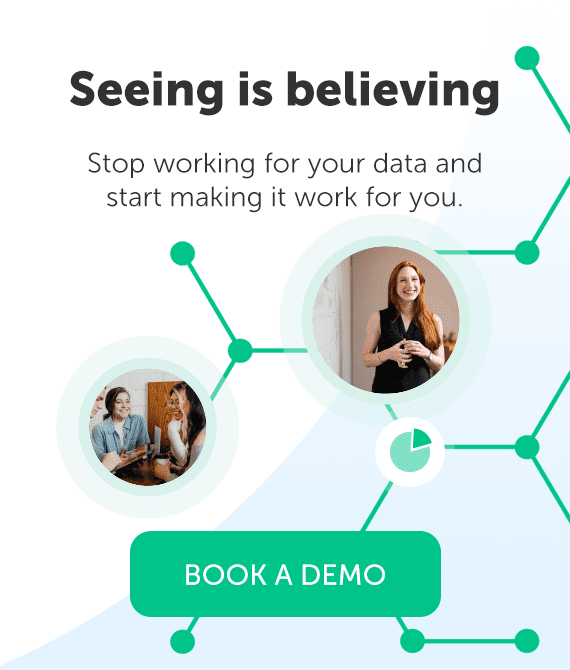Along with many other aspects of our lives, the internet revolutionized the business meeting. Yet, despite the convenience of tools like Skype, GoToMeeting, Zoom and even FaceTime, nearly everyone agrees that there’s nothing quite like a face-to-face meeting to build relationships and close deals. This makes pre meeting preparation essential to ensure each encounter is effective and productive. Knowing how to prepare for a client meeting can set the tone for success and leave a lasting impression.
While sales and business development professionals allocate a third of their workday to engaging with prospects, purchasers devote only a fraction of their decision-making time to meeting potential providers. Add to that the fact that less than a quarter of most sales emails are even opened, and it’s clear professionals need to get the most out of any opportunity to engage one on one with a prospect.
But how? The best place to start is thoughtful planning. Try these five pre meeting preparation steps before your next face-to-face and see what a difference it makes.
- Step 1: research each and every attendee for effective pre meeting preparation
- Step 2: understand the connections between your organization and the customer
- Step 3: set a main goal and objectives for the client meeting
- Step 4: plan the agenda to support meeting objectives
- Step 5: Plan your follow-up activities after the client meeting
- Get a head start on meeting preparation
Step 1: research each and every attendee for effective pre meeting preparation
Understanding your audience allows you to tailor your message and guide the meeting more effectively. It’s essential to gather comprehensive information during meeting preparation, not just about your primary contact but about all potential stakeholders.
Today, most purchasing decisions are made by groups, often involving more than 11 stakeholders, with some decisions requiring input from as many as 20 stakeholders. As a result, it is likely that everyone in the room will have a say in the final purchase decision.
To gather detailed information on all attendees, request a list of participants in advance. Conduct thorough research using web searches, LinkedIn profiles, and social media accounts. Note titles, overlapping contacts, group memberships, and shared interests. Reviewing the company website can also provide valuable insights.
If this sounds time-consuming, there is good news. If your CRM is equipped with relationship intelligence automation, this process can be significantly streamlined. Automation tools can help accelerate meeting preparation by compiling all relevant information without the need for manual searches. Advanced tools, such as Introhive, can even deliver this data as a “pre-meeting digest” directly to your email.
Step 2: understand the connections between your organization and the customer
In today’s complex sales environment, building and maintaining strong relationships across an organization is crucial. Relying solely on your primary champion is risky. With purchasing decisions increasingly made by groups, having strong connections with multiple stakeholders, especially those with decision-making power, is essential. Relationship mapping can help you visualize and leverage these connections, ensuring a more robust and resilient engagement strategy.
Consider these statistics: only 9% of sales deals are multi-threaded, meaning most sales professionals are connected to just one person (or no one at all) within the accounts they are working. This lack of broader engagement can be detrimental. On the other hand, professionals who use a multi-threaded approach see a 34% increase in win rates and a 10% reduction in the total deal cycle length.
Relationship intelligence automation, like Introhive, can also identify mutual connections and the strength of those relationships. For example, you might discover that your colleague Ryan from Procurement previously worked with your primary contact and maintains regular communication, offering a valuable opportunity for a warm introduction.
Step 3: set a main goal and objectives for the client meeting
Given that it takes an average of 18 calls just to connect with a buyer, once you do secure a client meeting, seizing the opportunity of a secured meeting demands thorough meeting preparation.
Learning how to prepare for a client meeting involves setting clear goals and objectives ahead of time. And when you’re trying to determine the main goal for the meeting, try to remember that it’s not all about you. While your ultimate aim may be to sell something, it’s unlikely that the client’s primary desire is to buy something. More likely, they’re looking for a solution to one or more pain points.
With that in mind, your first goal should be to understand what those are. In new relationships, especially, figuring out pain points may take a bit of investigative work. You might need to put yourself in the client’s shoes and make an educated guess based on the business and competitive intelligence you’ve gathered.
Once you’ve determined the overarching problem you want to solve, break that primary goal into smaller, measurable objectives.

Step 4: plan the agenda to support meeting objectives
Your agenda should reflect a logical progression of content designed to keep your potential clients engaged. Make sure to allocate a few minutes near the end for questions and next step discussions.
With each agenda item, you should be able to measure success. In keeping with our step two example, if you start off the meeting with a discussion about issues critical to the client, you should have a list of those pressing needs to work from after the meeting wraps up.
If time allows, ask a colleague to put another set of eyes on your draft agenda. A fresh review is often helpful for spotting content gaps or flow issues.
Expert insight: have a plan B for meeting preparation
Of course, meetings—like life—don’t always go as planned. The client meeting could start late or get cut short or sidetracked due to valuable discussion.
Consider contingencies during your meeting preparation and how you might navigate the unexpected. To build your Plan B, consider what content could be cut or included as part of follow-up. Understanding how to prepare for a client meeting also means being ready with a Plan B, ensuring you can adapt to any situation that may arise. For example, consider what content could be cut or included as part of follow-up.
Step 5: plan your follow-up activities after the client meeting
There’s no guarantee that a prospect will become a new customer following your first face-to-face meeting. In fact, on average, it takes 8 touchpoints to make a sale.
And don’t forget that meeting follow-up isn’t a matter of “one and done.” Far from it. Sales professionals who respond to leads within an hour are significantly more likely to have meaningful, decision-maker conversations than those who wait 24 hours. Even though 44 percent of sales pros give up after one try, the majority of B2B deals—80 percent—require five follow-up calls. So stick with it!
If all this seems like a lot to keep track of, give CRM data automation a try to easily track communications, upcoming engagement, and most recent touchpoints.
Get a head start on meeting preparation
The stakes are high in prospect and client meetings. Why not give yourself and your business development team a head start? Simplify meeting preparation with CRM data automation and relationship intelligence. While saving you hours of research, it delivers the deep insights into attendees and mutual connections that, when paired with your own diligent pre meeting preparation, leads to success both in terms of prospecting and bid management.
Request a demo to learn more about how Introhive can help you get ahead of the meeting curve and build long-lasting business relationships.
FAQs in Relation to Meeting Preparation
What are the essential steps for pre meeting preparation before a client meeting?
Essential steps for pre meeting preparation before a client meeting include researching each attendee, setting a main goal and objectives, planning a detailed agenda, having a contingency plan, and organizing follow-up activities. These steps ensure you are fully prepared and can make a positive impression on your clients.
How can I improve my meeting preparation for successful client interactions?
Improving your meeting preparation for successful client interactions involves several key actions: understanding the client’s needs and pain points, preparing personalized materials, practicing your presentation, and ensuring all technology works smoothly. Effective meeting preparation helps build stronger client relationships and increases the chances of a successful outcome.
Why is pre meeting preparation important for effective client meetings?
Pre meeting preparation is crucial for effective client meetings because it ensures you are well-informed and ready to address the client’s specific needs. Thorough preparation helps in creating a professional impression, allows for smoother meeting flow, and enhances the potential for achieving desired meeting outcomes, whether it’s building a relationship or closing a deal.





